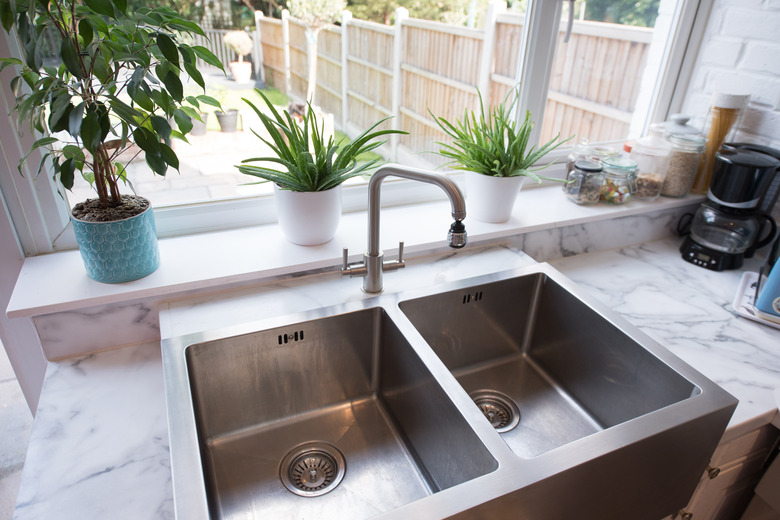How To Restore A Scratched, Dull Stainless-Steel Sink
We may receive a commission on purchases made from links.
Stainless steel sinks are designed to take a beating, but they can easily be restored to like-new condition with the right products and techniques. You can restore a scratched, dull stainless steel sink so that it has a shiny, brushed finish just as it did when it came off the production line.
If you're nervous about scrubbing your stainless steel sink because you've noticed it scratches easily, there's a simple trick you can use. Embrace stainless steel's tendency to scratch by ensuring all scratches move in the same direction, which will give the sink a uniform look with no noticeable "patches of scratches." Horizontal lines tend to look best. Throughout the entire restoration process, try to work in a deliberate pattern from one end of the sink to the next.
Start With a Clean Surface
Start With a Clean Surface
The first step toward restoring a stainless steel sink involves cleaning the stainless steel. After all, you want the restorative products to reach the stainless steel and not be impeded by a layer of dirt. Rinse the sink to remove any abrasive debris, and then start cleaning with a basic grease-cutting dish soap and a wet cotton rag. Although the cotton is soft enough to not scratch the stainless steel, go ahead and work in the horizontal pattern to get used to this method.
When you've scrubbed the soap over the entire surface, rinse it off. Use your bare hands to feel for any lingering greasy spots in the sink and repeat the cleaning process if needed. If your sink is quite filthy, use a scrubbing pad instead of a cotton rag. A scrubbing pad will definitely scratch stainless steel, so pay extra attention to the direction of each scrubbing stroke.
Smooth Out or Refine Scratches
Smooth Out or Refine Scratches
Next, use a fine grade of steel wool to smooth out any existing scratches and to create a more refined brushed look on the stainless steel. According to Enduring Charm, a 000-grade steel wool pad is a great starting point. Your goal is to intentionally scratch the surface of the stainless steel sink in long, methodical strokes to eliminate any odd scratches that would otherwise attract attention.
The steel wool can also help you rub out any stubborn areas on the sink, like paint splatters. You can start out using small, vigorous strokes to lift the debris, and then smooth it over with long strokes in one direction only.
Polish a Stainless Steel Sink
Polish a Stainless Steel Sink
If you like the brushed appearance of your sink at this stage, you can stop the restoration process. However, if you want your dull stainless steel sink to really shine, it's time to break out the metal polish. Because metal polish can have a strong smell, it's important to open a window to encourage adequate ventilation and circulate fresh air. Protect your countertops by applying painter's tape around the edges and wear rubber gloves when applying the polish.
Start with a completely dry sink and squirt the metal polish directly onto the steel wool. You know the drill: apply it in a uniform manner to keep all scratches moving in the same direction. Follow the manufacturer's directions regarding how long the polish should sit on the stainless steel. Then wipe it up as much as possible with a dry paper towel.
Repeat the metal polish application if desired or use a rubbing compound to achieve an even finer finish. After wiping out as much of the polishing products as possible, rinse the sink one more time.
